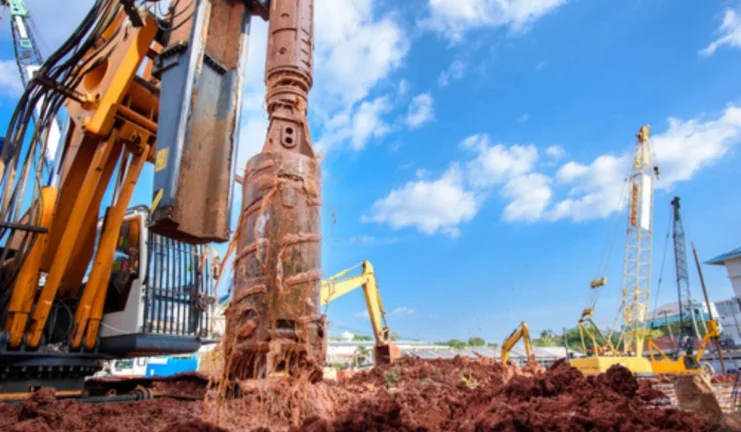Piling machinery plays a crucial role in the construction industry, providing the necessary support for structures by driving piles into the soil. These machines vary greatly in design and application, each suited to specific conditions and construction requirements. This comprehensive guide aims to explore the various types of piling machinery, delving into their unique features, advantages, and suitable applications.
Understanding Piling and Its Importance
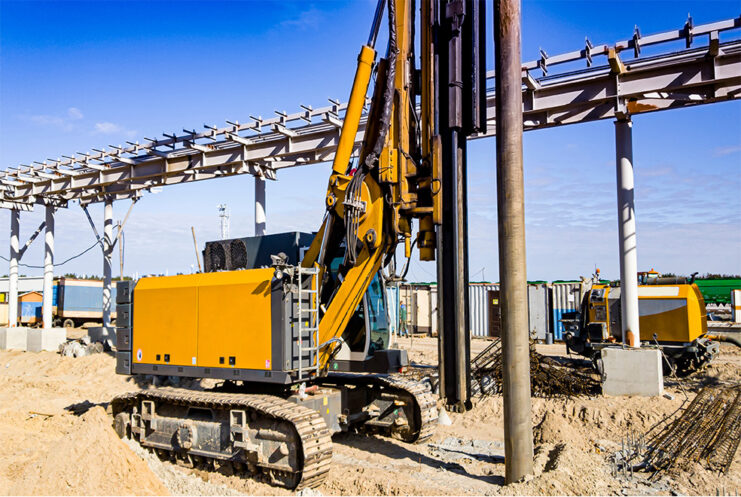
Before delving into the types of piling machinery, it’s essential to understand what this is and why it’s so important in construction. Piling involves driving heavy beams, usually made of steel, concrete, or wood, into the ground to support structures like buildings, bridges, and piers. This process is crucial for stabilizing structures, especially in areas with weak or unstable soil. Check out more on piling machinery at Sigma Plant Finder.
Drop Hammers
Drop hammers are among the oldest and most straightforward types of piling equipment. As the name suggests, they work by dropping a heavy weight or hammer onto the pile, driving it into the ground through sheer impact force. This method is simple and effective but can be quite noisy and less efficient compared to more modern machinery.
Diesel Hammers
Diesel hammers represent a significant advancement in piling technology. These hammers use diesel fuel to create an explosion within a cylinder. The force of this explosion drives the pile into the ground. Diesel hammers are powerful and efficient, making them a popular choice for many heavy construction projects.
Hydraulic Impact Hammers
Hydraulic impact hammers use hydraulic power to drive piles. They are more controlled and less noisy compared to diesel hammers. These hammers are particularly useful in urban areas or sites where noise and vibration need to be minimized. They offer high efficiency and are suitable for driving a wide range of pile types.
Vibratory Hammers
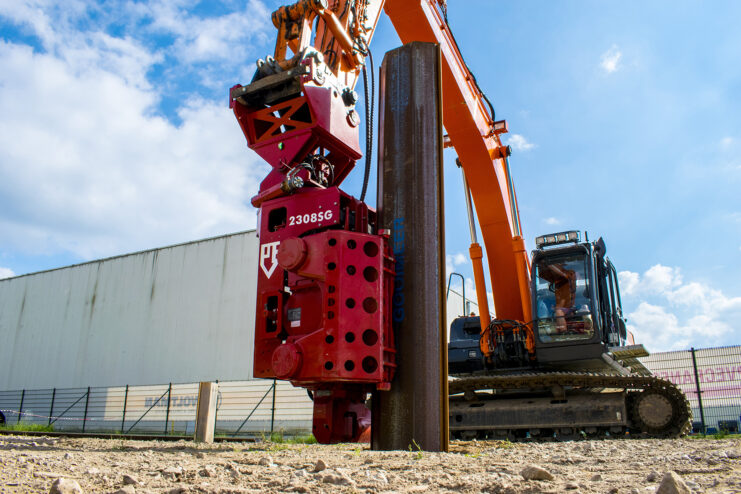
Vibratory hammers are a modern solution for driving piles. They work by vibrating the pile, reducing friction between the pile and the soil, and allowing it to be driven into the ground with less force. Vibratory hammers are fast and effective, especially in sandy or loose soils. However, they may not be as effective in dense, clay-rich soils.
Rotary Boring Machines
Rotary boring machines offer a different approach to piling. Instead of driving piles, they drill large holes into the ground, which are then filled with concrete to form piles. This method is ideal for creating deep foundations and is often used in conjunction with other piling methods to provide additional stability.
Continuous Flight Auger (CFA)
The Continuous Flight Auger (CFA) is a type of rotary boring machine. It uses a continuous screw-shaped blade to drill into the ground. Once the desired depth is reached, concrete is pumped through the hollow center of the auger as it is slowly withdrawn, leaving a concrete pile in place. CFA is efficient and produces minimal soil disturbance, making it a popular choice for urban construction.
Piling Rigs
Piling rigs are large, mobile machines that can be equipped with different types of tools, such as hammers or drills. These rigs provide the power and stability needed for large-scale piling operations. They are versatile and can be adapted to various methods and conditions.
Jack-Up Barges
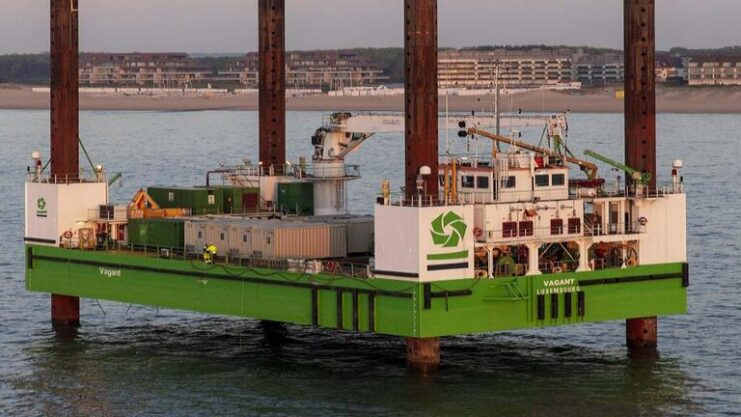
In marine construction, jack-up barges are essential. These floating platforms can be raised on legs above the water level, providing a stable base for piling machinery. They are commonly used for constructing bridges, piers, and offshore structures.
Sheet Piling Machinery
Sheet piling involves driving thin, interlocking sheets of steel, vinyl, or wood into the ground to form a continuous wall. This method is often used for temporary or permanent retaining walls and flood defenses. The machinery used for sheet piling is similar to other equipment but is specially adapted for handling and driving the sheet piles.
Pile Driving Rigs
Pile driving rigs are a more advanced form of piling machinery. They are self-contained units that can handle, position, and drive piles. These rigs are highly efficient and can be equipped with various types of hammers or drills. They are particularly useful for projects where accuracy and speed are crucial.
Choosing the Right Piling Machinery
Selecting the right piling machinery for a project depends on several factors, including soil type, pile material, project scale, and environmental considerations. For instance, vibratory hammers might be the best choice for sandy soils, while rotary boring machines may be more suitable for dense urban environments.
Environmental and Safety Considerations
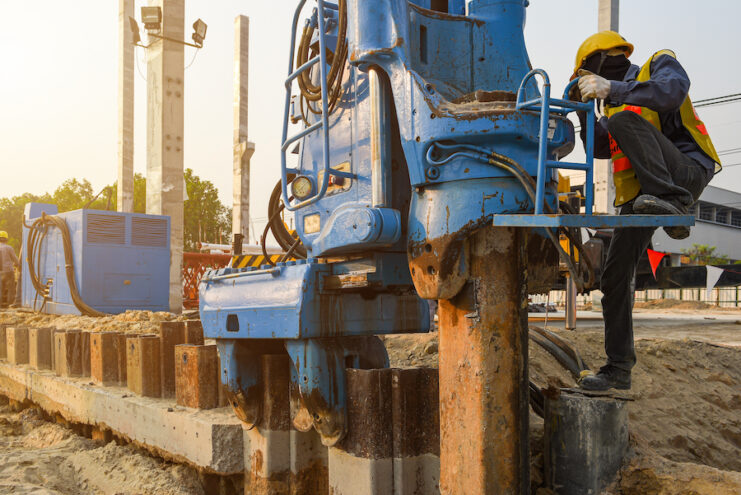
Environmental and safety considerations are critical when choosing and operating piling machinery. Noise, vibration, and emissions can all have significant impacts on surrounding areas and communities. Modern machinery often includes features designed to minimize these impacts, such as noise reduction systems and low-emission engines.
The Future of Piling Machinery
The future of piling machinery looks towards increased efficiency, environmental friendliness, and automation. Advancements in technology are leading to machines that are not only more effective but also safer and more sustainable. The integration of digital technologies, like GPS and AI, is also enhancing precision and control in piling operations.
Advancements in Piling Machinery Technology
The evolution of piling machinery technology is a testament to the construction industry’s commitment to innovation, efficiency, and environmental stewardship. This expansion focuses on the latest advancements and future trends in this niche, exploring how these developments are revolutionizing the way foundations are laid for various structures
Modern piling machinery has come a long way from the basic drop hammers used in the early days of construction. Today’s machines are equipped with sophisticated technology that enhances their effectiveness, safety, and environmental compatibility.
Conclusion
Piling machinery is a diverse and evolving field, with each type of equipment offering unique advantages for different construction scenarios. Understanding the various types of machinery and their applications is essential for any construction professional. As the industry continues to advance, we can expect to see even more innovative solutions in the world of piling.

